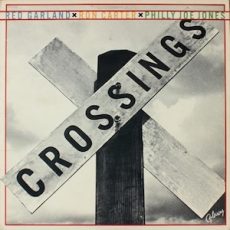
Requisites
Crossings ~ Red Garland, Ron Carter and Philly Joe Jones | By Eddie Carter
It happened like this: after hearing Introducing Carl Perkins, I spent the remainder of the evening listening to several other trio albums while reading when I heard a title I hadn’t played in a while, which inspired this morning’s discussion. Crossings (Galaxy GXY-5106) is a 1978 release bringing together a dream team to record their first trio album. Red Garland is on piano, Ron Carter is on bass, and Philly Joe Jones is on drums. All three were members of the Miles Davis Quintet and have given jazz fans many incredible albums throughout their careers as leaders and sidemen. My copy is the original U.S. Stereo release.
Side One starts with a brief trio introduction, setting the stage for the melody of Solar by Chuck Wayne and Miles Davis. Red leads the way with a statement that sparkles with energy. Ron delivers precisely articulated choruses in the second solo. The pianist and Philly share the finale in an inspired interpretation, leading to the theme’s reprise. Railroad Crossing by Ron Carter is a smooth, easy-flowing tune. The bassist sets the tone with a concise introduction that seamlessly transitions to the trio’s melody. Carter begins with a leisurely opening statement; then, Garland gets into a down-home groove on the following solo ahead of the bassist’s return for the ending theme.
Never Let Me Go is a beautiful Jay Livingston and Ray Evans song. It was featured in the 1956 film noir The Scarlet Hour. Red opens with a short unaccompanied introduction that segues into the trio’s gorgeous theme. The pianist goes first with a delicately sultry performance, then hands the torch to Ron, who delivers a heart-warming presentation before the close. Oleo by Sonny Rollins gets underway with a short workout by Jones, leading to the ensemble’s quick theme. Garland ignites the fire in the first solo, and then Carter keeps the fires burning next. Jones adds more heat in the closer, preceding a captivating conclusion.
George and Ira Gershwin introduced But Not For Me in the 1930 Broadway musical Girl Crazy. The jazz standard starts Side Two with Ron leading the trio through the melody. The bassist masterfully manages the opening statement before making room for Red, who swings in the following reading. Ron returns to converse briefly with Philly ahead of the finish. Cole Porter’s classic Love For Sale begins with a lengthy solo piano introduction before the trio steps on the gas for the lively theme. Garland ignites the first solo with fiery choruses. Carter steps into the spotlight next and slows things down, and Garland returns for a vigorous exchange with Jones into the climax.
Orrin Keepnews produced Crossings, and Bruce Walford recorded and mixed the album at Fantasy Studios. David Turner mastered the album. The record’s sound quality possesses a vibrant soundstage, placing the musicians in your listening room with excellent fidelity. If you’re a fan of these jazz giants and enjoy a good piano trio album, I invite you to check out Crossings by Red Garland, Ron Carter, and Philly Joe Jones. The group’s musicianship shows three masters’ at work, and the six selections complement each other perfectly. The result is an album you can sit back, listen to and enjoy from the first note to the finale!
~ But Not For Me, Love For Sale, Oleo – Source: JazzStandards.com
~ Solar – Source: Wikipedia.org
© 2024 by Edward Thomas Carter
More Posts: bass,choice,classic,collectible,collector,drums,history,instrumental,jazz,music
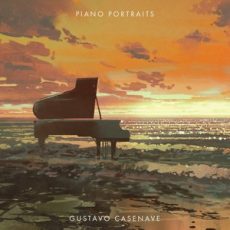
Daily Dose Of Jazz…
Gustavo Casenave was born on November 10, 1971 in Montevideo, Uruguay where he studied classical piano from age 6 with Maestro Hector Tosar, who was Aaron Copland’s student. He led the group Kongo Bongo and recorded two albums, however, following a conversation with Hugo Fattoruso he decided to study in Boston, Massachusetts. In 1994 received a full scholarship from O.A.S. to study at the Berklee College of Music and two years later he graduated magna cum laude.
During this period he was awarded the Professional Music Achievement, and his composition Fragiltimer for the Past Future for piano was selected as one of the ten best original compositions coming out of Berklee in the last 30 years, 1966-1996. In 1995 he was accepted as a private student by the legendary jazz vibraphonist Gary Burton.
1997 saw Gustavo settling in New York City and creating a name for himself. He has been awarded three Grammys as a producer, composer and performer, Best Latin Jazz Album (producer), Best Tango Album, and Best Instrumental Album that showcased his ability to create compositions that resonate with audiences worldwide. He has also had six Latin Grammy nominations and three nods for Best Contemporary Classical Composition.
As an educator, Casenave has held positions as Jazz Department Director at the Harbor Conservatory for the Performing Arts and has conducted Tango Master Classes as well as being a guest artist lecturer at The Juilliard School, Yale University, Eastman School of Music, Oberlin Conservatory and Indiana University.
Pianist Gustavo Casenave continues to contribute to jazz as a performer, composer, educator, and scholar, having published his first music theory book, “The Harmonic Structure Levels.
More Posts: bandleader,composer,educator,history,instrumental,jazz,music,scholar
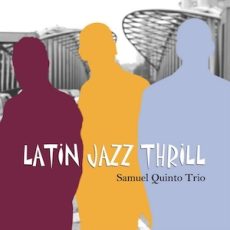
Daily Dose Of Jazz…
Samuel Quinto Feitosa was born Samuel Quinto Feitosa on September 5, 1973 in Belém, Pará, but grew up in Salvador, Bahia. From the age of seven, he developed his interest in piano from the gospel music performed in the Baptist Church during his childhood. An autodidact, he played at home without teachers, learning harmony, reading and writing music and orchestration, musical composition, arranging for the church choir, and started playing as a pianist at age 12.
Releasing his debut CD Latin Jazz Thrill in 2007 in Portugal, with his trio, Samuel followed it with Salsa ‘n Jazz, containing eight original compositions and a standard the following year. After a European tour he established the first course of Latin Jazz at Jazz School North, Porto. He also became the artistic director of one of the most traditional jazz Portuguese clubs, B-flat.
He returned to Brazil in 2012 to take the position of Music Minister at the Second Baptist Church in Mossoro, Rio Grande do Norte. During this period he wrote symphonies, opera, minuets and christmas rratorio for choir.
In 2015 he becames the newest piano representative of Fritz Dobbert pianos and returned to jazz performance. He published his first book called Improvisar é muito fácil in 2016. Quinto is a member of several organizations including the International Council for Traditional Music, the American Council of Piano Performers, the National Federation of Music Clubs and has a collaborative relationship with UNESCO.
Pianist Samuel Quinto, who is a Fellow of the Royal Society of Arts in London, continues to perform, compose and educate.
More Posts: bandleader,composer,history,instrumental,jazz,music,piano
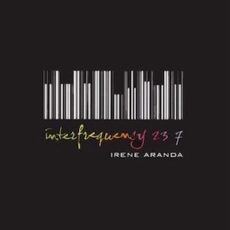
Daily Dose Of Jazz…
Irene Aranda was born in Jaén, Andalucía, Spain on September 2, 1980 and started to play piano at age seven under the guidance of her maternal grandparents. She graduated from the Conservatory of Music in Granada and complimented her classical training by attending piano performance and composition classes with Gerardo López Laguna, Guillermo González, Fernando Puchol, Pilar Bilbao, Antonio J. Flores and Javier Darías, among the most notable.
She was self-taught in jazz and free improvisation, she later studied with Peter Zack, Eduard Simons, Chano Domínguez, Nikky Illes, Mike Ph. Mosman, Greg Hopkins, David Pastor, Jordi Farrés Tomás, Pete Churchill, Perico Sambeat, Tony Reedus, etc.
Her first work as a leader, Interfrequency 23 7, brought her great critical acclaim which led her to participate in numerous festivals. Since her debut release in 2007 she has released six more albums.
Freed from stereotypes, Irene has gone on to perform and collaborate with Paolo Fresu, Toots Thielemans, Maria Pia De Vito, Baldo Martínez and Bojan Z among others. Aranda has played with Don Malfon, Brandon López, Markus Breuss, Johannes Nästestjö, Samuel Blasser, Germán Díaz, Agustí Fernández, Joanna Mattrey, Lucía Martínez, Javier Carmona, Núria Andorrà, Marc Egea and numerous others.
Pianist, improviser, composer Irene Aranda continues to swim against the stream of pianists with her creativity and exploration in her music.
More Posts: bandleader,composer,history,improviser,instrumental,jazz,music,piano
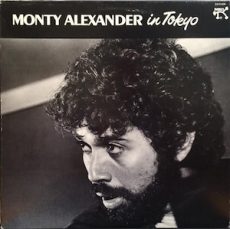
Requisites
Monty Alexander In Tokyo | By Eddie Carter
I first heard Monty Alexander In Tokyo (Pablo Records 2310-836) in 1985 at the former jazz station, WNOP 740 AM, after my move to Cincinnati from Cleveland, Ohio. It was recorded during the pianist’s first trip to the city and is his nineteenth release as a leader. Here, he is working with two of the best in the business: Andy Simpkins on bass and Frank Gant on drums. My copy is the 1979 U.S. Stereo pressing, and the trio opens this musical adventure with a trip to Broadway by Billy Byrd, Teddy McRae and Henri Woode. They begin this catchy tune with a delightfully crafted melody. Monty cuts loose in a spirited statement that’s sure to have your fingers popping and toes tapping along until the song’s conclusion.
Just In Time by Jule Styne, Betty Comden, and Adolph Green starts with a short introduction by Monty, segueing into the threesome’s pulsating theme, who treats the standard like an old friend. Monty comes alive in the song’s only interpretation ahead of the closing chorus and finish. Sweet Lady is a lovely ballad by Dave Zoob, Frank Crumit, and Howard E. Johnson. It’s a showcase for Monty and Andy, who start the song with a tender introduction that leads to their enchanting melody. The duo sustains the gentle mood in the delicately sensitive statement they share, preceding a polite reprise and climax.
Tricotism by Oscar Pettiford begins with the trio introducing this happy swinger collectively before taking the theme at a fast clip. Monty kicks off the solos with a scintillating opening statement; then Andy takes over for a bit of brisk walking. The pianist has a second interlude before Frank engages in a short workout ahead of the melody’s restatement and ending. Never Let Me Go by Jay Livingston, and Ray opens with the threesome’s slow-tempo introduction. The pace picks up to a medium beat for the opening chorus, ahead of the pianist’s driving solo that has something to say into the closing chorus.
Up next is Montevideo by Richard Evans, which takes off from the opening notes of the trio’s upbeat introduction and melody. The rhythm section spurs Monty to soar into the stratosphere in the song’s only statement until he returns to Earth for the theme’s reprise and abrupt ending. Pawnbroker by Quincy Jones is a very pretty ballad from the 1964 film drama. It’s a solo showcase for Monty Alexander, and the pianist uses the poignant melody effectively to depict the song’s sincerity and melodic beauty in a gorgeous interpretation, preceding the melody restatement and a lovely summation.
See See Rider by Ma Rainey brings the album to a close on an upbeat note. The trio starts expressing their joy and pleasure in the melody. Monty is up first with an especially impressive interpretation; then Andy takes a short walk through the second reading. The pianist puts the finishing touches on the song ahead of the closing chorus and ending. Monty Alexander produced Monty Alexander In Tokyo, and Katsuyuki Handa and Kazutoyo Takeda were the recording engineers. The sound quality is excellent, with a vivid soundstage that transports the trio to your listening room’s sweet spot.
Whether you’re new to Monty Alexander’s music or a seasoned fan, Monty Alexander In Tokyo is a versatile album that’s perfect for any occasion. It’s the perfect soundtrack for a relaxing evening or a lively dinner with friends. I highly recommend adding it to your jazz library. With its diverse range of tracks, it’s a testament to the trio’s musical prowess and a must-have for anyone who loves a piano trio!
~ Just In Time – Source: JazzStandards.com
~ Broadway, See See Rider – Source: Wikipedia.org
© 2024 by Edward Thomas Carter
More Posts: choice,classic,collectible,collector,history,instrumental,jazz,music,piano



